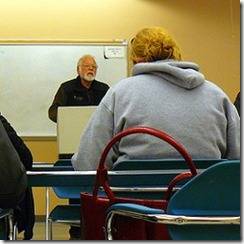 From an operations standpoint, employees get done what we place on the production schedule. They improve efficiency and effectiveness making current products with training and experience.
From an operations standpoint, employees get done what we place on the production schedule. They improve efficiency and effectiveness making current products with training and experience.
Equal emphasis on training for future competitive advantage is key to sustainable industry leadership for any company.
Operational managers and human resource leaders must look one, two, and more years out to ensure the workforce is prepared to use the tools and make the products of the future.
It’s easy to get wrapped up in the day to day operations of making sure people on the workforce, both full time and temporary workers, are present and accountable for today’s operations.
We think of training as the method to improve current levels of operational efficiency and effectiveness.
However, in today’s economy, the products made today may rapidly be replaced with new and different products made for tomorrow, and next year.
Additionally, the tools, machines and methods change as rapidly as the parts, assemblies and products that are made.
That means the most important focus for workforce preparedness is not only today’s operations, but tomorrow’s operational demands on the workforce of the future.
Whether from an employee or an employer perspective, the only way to sustain competitive advantage in the long run, is to use training as a tool to prepare both full-time and temporary employees to make the products of the future. That also means preparing them to use the tools and machines of the future to make those future products and deliver those future services.
Employees (temporary and full time) should take their future into their own hands, and sign up for the training that will make them in demand in the future. Don’t expect someone else to do a good job of managing your career to your satisfaction – that can only be done by you.
Employers should ensure that the types of training and opportunities for learning are available to both full time and temporary workers. If the operational plan demands this kind of sustained investment in the workforce that produces the products and services it makes, then the future training requirements one, two and sometimes three years out is a critical part of the organizational development plan.
Employers with a long-term operational plan and who use temporary employees in the operation will gain competitive advantage when aligning with a staffing firm that considers their goals part of their own goals in terms of staffing.
Many of Barton Staffing Solutions’ clients have long-term training programs in place to augment the skills developed in trade and professional schools for their industry. They know that having well-trained full time and temporary workers on their team is a function of training for future competitive advantage. These Barton Staffing Solutions clients benefit from investing in talent at the high school, college and university levels that align their workforce of the future with their long-term product roadmap and corporate goals. Some of these trained workers will come back to them in the full time workforce, others will come back as temporary workers through a staffing agency like Barton Staffing Solutions.
Barton Staffing Solutions is focused on client goals today, and for the future. Sharing the goals with your staffing firm should have meaning and resonate with your account representative such that you are confident they know your business and are providing for your needs today, and for the future. Call us today to learn more about state of the art temporary staffing.

